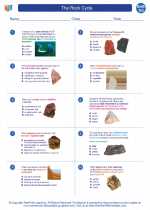Ocean Circulation
Ocean circulation refers to the large-scale movement of water in the oceans. It plays a crucial role in regulating Earth's climate and distributing heat around the globe. There are two main types of ocean circulation: surface currents and deep currents.
Surface Currents
Surface currents are driven by the wind and the Earth's rotation. They generally flow in the upper 400 meters of the ocean and are influenced by the shape of the ocean basins. The major surface currents include the Gulf Stream, the Kuroshio Current, and the Antarctic Circumpolar Current.
Deep Currents
Deep currents, also known as thermohaline circulation, are driven by differences in water density, which are caused by variations in temperature and salinity. These currents can extend thousands of meters below the ocean's surface and play a critical role in the global conveyer belt, which transports heat and nutrients around the world's oceans.
Factors Affecting Ocean Circulation
Several factors influence ocean circulation, including the Coriolis effect, which causes the deflection of surface currents due to the Earth's rotation, and the shape of the continents, which affects the flow of ocean currents. Additionally, temperature and salinity gradients play a significant role in driving deep ocean circulation.
Study Guide
- What are the two main types of ocean circulation?
- How are surface currents driven?
- What factors influence deep ocean currents?
- Explain the role of the Coriolis effect in ocean circulation.
- Discuss the significance of ocean circulation in regulating Earth's climate.
Understanding ocean circulation is essential for comprehending global climate patterns and the distribution of marine life. It also has practical implications for activities such as shipping, fishing, and offshore energy production.
[Ocean Circulation] Related Worksheets and Study Guides:
.◂Earth Science Worksheets and Study Guides High School. The Rock Cycle

 Worksheet/Answer key
Worksheet/Answer key
 Worksheet/Answer key
Worksheet/Answer key
 Worksheet/Answer key
Worksheet/Answer key
 Vocabulary/Answer key
Vocabulary/Answer key
 Vocabulary/Answer key
Vocabulary/Answer key
 Vocabulary/Answer key
Vocabulary/Answer key
